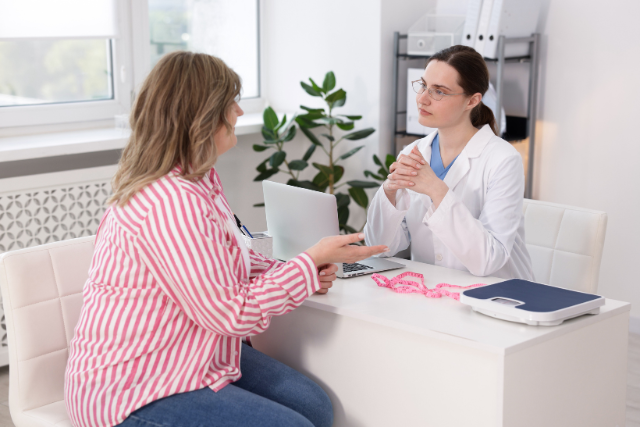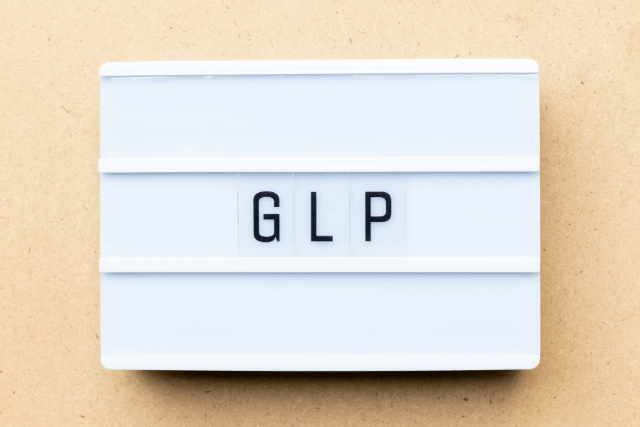Hemorrhoids are a common condition that can cause discomfort and significantly affect a person’s quality of life. They occur when blood vessels in the anal area become swollen or inflamed. The symptoms of hemorrhoids vary, ranging from mild irritation to more severe pain and bleeding. This blog explores the common symptoms of hemorrhoids and provides practical treatment methods to help alleviate the discomfort.
What Are Hemorrhoids?
Hemorrhoids, often referred to as piles, are swollen veins in the lower rectum or anus. These veins can become inflamed due to increased pressure, often caused by factors like straining during bowel movements, pregnancy, or prolonged sitting. Hemorrhoids can either be internal, located inside the rectum, or external, forming under the skin around the anus.
Recognizing the common symptoms of hemorrhoids early can help you start treatment quickly and minimize discomfort. In this blog, we will break down these symptoms and guide you on how to treat them effectively.
Common Symptoms of Hemorrhoids
The common symptoms of hemorrhoids can vary based on whether the hemorrhoid is internal or external. Below are the most prevalent signs to watch out for:
1. Pain and Discomfort
Pain is one of the most noticeable and common symptoms of hemorrhoids. External hemorrhoids, in particular, can cause sharp or throbbing pain around the anus, especially during or after bowel movements. This pain can be intense and may make it difficult to sit or walk comfortably.
In contrast, internal hemorrhoids typically don’t cause pain unless they become prolapsed (bulging out of the anus) or thrombosed (developing a blood clot). In these cases, you might feel significant pain and discomfort.
2. Bleeding During Bowel Movements
Another common symptom of hemorrhoids is rectal bleeding. If you notice bright red blood on the toilet paper or in the toilet bowl after a bowel movement, it may be due to hemorrhoids. The bleeding usually happens because the swollen veins rupture when passing stools. However, it’s important to consult a healthcare professional to rule out other causes of rectal bleeding, as it could also indicate more serious conditions.
3. Itching or Irritation Around the Anus
Itching is a very common symptom associated with both internal and external hemorrhoids. It happens because the swollen veins may leak mucus, causing irritation in the surrounding skin. The itching can become quite persistent, especially if the area is not kept clean and dry. For relief, applying soothing creams or ointments can be helpful.
4. Swelling or Lump Around the Anus
External hemorrhoids can cause swelling or the formation of a lump around the anus. This lump may be tender to the touch and can be especially painful when sitting. The lump may also be the result of a blood clot, known as a thrombosed hemorrhoid, which can increase discomfort significantly.
5. Feeling of Fullness or Incomplete Evacuation
Some individuals with hemorrhoids report a sensation of fullness in the rectum after having a bowel movement. This sensation often occurs with internal hemorrhoids, especially when they prolapse. You might feel like you haven’t fully emptied your bowels, which can lead to repeated trips to the bathroom.
6. Mucus Discharge
Mucus discharge can occur when internal hemorrhoids cause irritation in the anal canal. This may lead to excess mucus production, which can result in an uncomfortable feeling or staining of underwear.
Causes of Hemorrhoids
The common symptoms of hemorrhoids are often caused by factors that increase pressure on the veins in the rectum and anus. Some of the most common causes include:
- Straining during bowel movements: Prolonged straining puts pressure on the veins in the anus, causing them to swell.
- Pregnancy: The growing uterus places pressure on the veins in the rectum, increasing the likelihood of hemorrhoid development.
- Chronic constipation or diarrhea: Both of these conditions can lead to frequent straining, increasing the risk of hemorrhoids.
- Obesity: Excess weight puts additional pressure on the veins in the lower abdomen and rectum.
- Sitting for long periods: Prolonged sitting, especially on the toilet, can contribute to the development of hemorrhoids.
- Aging: As you age, the tissues supporting the veins in the rectum can weaken, increasing the risk of hemorrhoids.
How to Treat Hemorrhoids Effectively
Once you’ve identified the common symptoms of hemorrhoids, the next step is to treat them effectively. Treatment for hemorrhoids typically involves a combination of home remedies and medical interventions. Here’s a breakdown of some of the most effective ways to treat hemorrhoids.
1. Over-the-Counter Treatments
Over-the-counter (OTC) medications can provide quick relief for hemorrhoid symptoms. These include creams, ointments, and suppositories designed to reduce pain, inflammation, and itching. Common ingredients to look for include hydrocortisone, witch hazel, and lidocaine.
2. Warm Sitz Baths
Soaking in a warm sitz bath is a simple yet effective way to soothe the affected area and reduce pain and inflammation. To do this, sit in a few inches of warm water for about 10 to 15 minutes. This can help reduce swelling and promote healing. Adding Epsom salts to the bath can also provide additional relief and enhance the soothing effects.
3. Increase Fiber Intake for prevent hemorrhoids
A high-fiber diet is crucial for preventing and treating hemorrhoids. Fiber softens stools, reducing the need to strain during bowel movements. Include plenty of fruits, vegetables, whole grains, and legumes in your diet to increase your fiber intake. Fiber supplements like psyllium husk can also be beneficial for easing constipation.
4. Stay Hydrated
Drinking plenty of water is important for preventing constipation, which is a major contributor to hemorrhoids. Aim to drink at least 8-10 glasses of water a day to keep your stools soft and easy to pass.
5. Use Cold Compresses
If you have external hemorrhoids, applying a cold compress to the area can help reduce swelling and provide relief from pain. Wrap a few ice cubes in a clean cloth or use a cold pack for 15-20 minutes at a time. Repeat this several times a day for best results.
6. Avoid Prolonged Sitting
Sitting for long periods, especially on the toilet, can make hemorrhoid symptoms worse. Try to avoid sitting for more than 10-15 minutes at a time. If you work at a desk, make sure to stand up and stretch periodically to alleviate pressure on the anal area.
7. Topical Medications
For more severe cases, a doctor may recommend prescription-strength creams or ointments to help reduce inflammation and provide relief from symptoms. These may contain stronger corticosteroids or other medications that can address more severe hemorrhoids.
8. Laser Hemorrhoidoplasty (LHP®)
For individuals experiencing more advanced hemorrhoids, Laser Hemorrhoidoplasty (LHP®) can offer a cutting-edge solution. LHP® is a minimally invasive treatment that uses laser energy to shrink and coagulate hemorrhoidal tissue. The procedure is done in a doctor’s office under local anesthesia, and it is known for its quick recovery time and reduced pain compared to traditional hemorrhoid surgery. Laser treatment can be particularly effective for patients who have not found relief from other treatments, offering a quicker, less painful option for long-term relief.
9. Minimally Invasive Procedures
If home treatments do not provide relief, there are several minimally invasive procedures available to treat hemorrhoids. These include rubber band ligation, sclerotherapy, and infrared coagulation. These procedures aim to shrink or remove hemorrhoids with minimal recovery time and discomfort.
10. Surgical Treatment
In rare cases where hemorrhoids are severe or have not responded to other treatments, surgical intervention may be necessary. Hemorrhoidectomy is a procedure in which the hemorrhoidal tissue is surgically removed. Another option is hemorrhoid stapling, which involves removing a portion of the hemorrhoidal tissue and stapling it back in place.
Prevention of Hemorrhoids
Preventing hemorrhoids is often easier than treating them. To reduce your risk of developing hemorrhoids, consider the following tips:
- Maintain a healthy diet: Ensure you are getting enough fiber and drinking plenty of water to prevent constipation.
- Exercise regularly: Physical activity can help improve bowel function and reduce pressure on the veins.
- Avoid straining during bowel movements: Take your time and avoid forcing yourself to go.
- Practice good hygiene: Clean the anal area gently after each bowel movement to reduce irritation.
- Avoid prolonged sitting: Take breaks throughout the day to stand up and move around.
When to See a Doctor
In most cases, hemorrhoids can be treated with home remedies and over-the-counter medications. However, it’s important to consult a doctor if you experience:
- Severe or persistent bleeding
- Intense pain that doesn’t improve with treatment
- A lump near the anus that is very painful
- Changes in bowel habits or stool consistency
A healthcare provider can offer a proper diagnosis and recommend more advanced treatments if necessary.
Conclusion: Common Symptoms of Hemorrhoids and How to Treat Them
The common symptoms of hemorrhoids can be uncomfortable, but with proper treatment and care, most people can manage their symptoms effectively. Whether through lifestyle changes, home remedies, or medical interventions like Laser Hemorrhoidoplasty (LHP®), there are many ways to reduce the discomfort caused by hemorrhoids. If symptoms persist or worsen, seeking medical advice is crucial to ensure the best possible care. Taking preventive measures and addressing symptoms early can help maintain your comfort and health.



